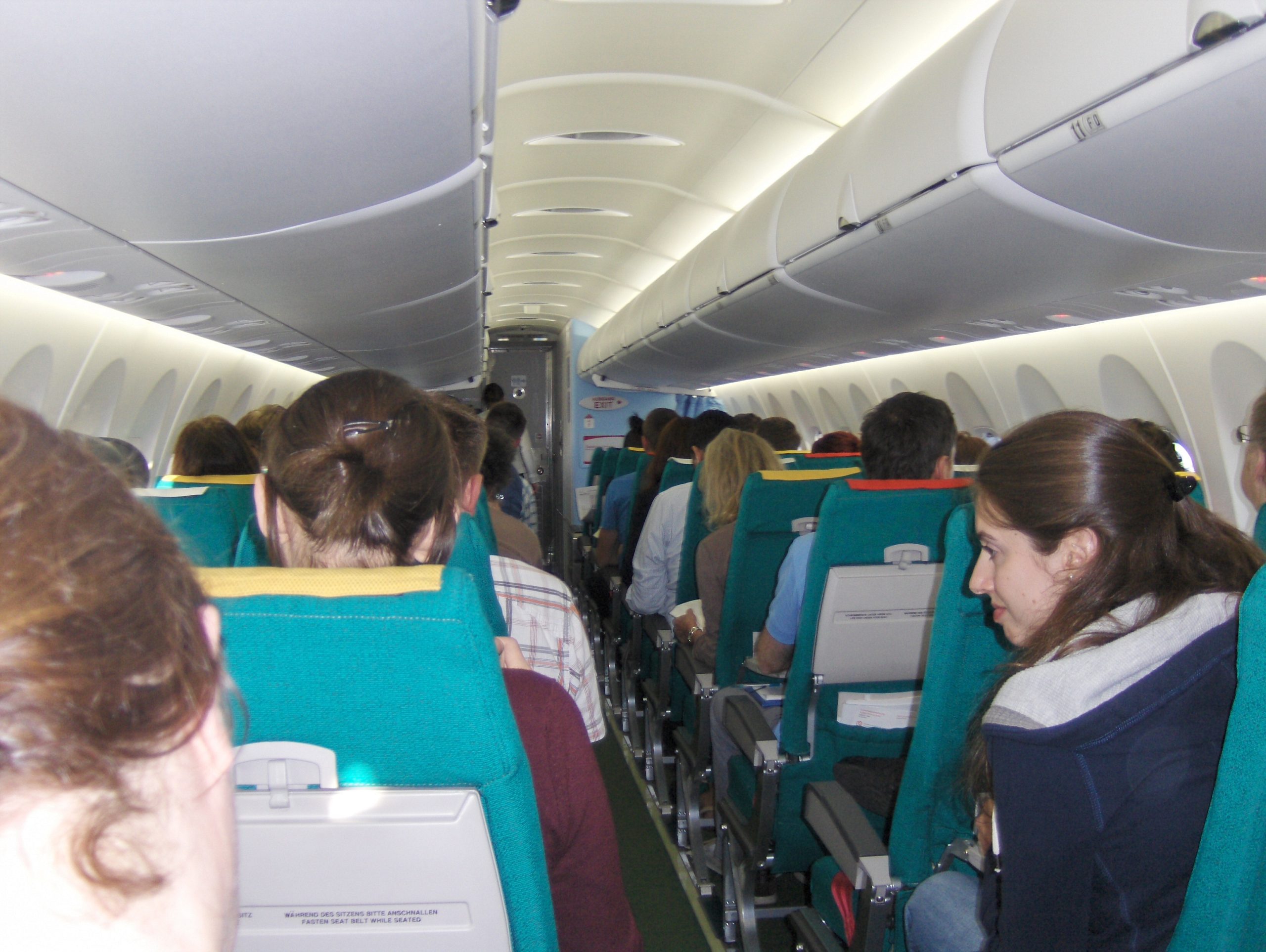Do you feel increasingly cramped when flying economy lately? According to a recent story on Dutch TV news program EditieNL, space between seats in economy class has decreased as much as 20cm in recent years.
The program invited TU Delft Industrial Design Engineering (IO) PhD candidate Suzanne Hiemstra-van Mastrigt to explain the reality behind these changes.
Many airlines are squeezing more seats onto their planes these days. “It’s our fault as passengers because we want to fly cheap,” said Hiemstra-van Mastrigt in the TV-programme. But she explained that innovations in materials have led to the design of thinner seats so it doesn’t necessarily mean there is less leg room. In addition, Hiemstra-van Mastrigt said there are new design ideas like moving the literature pocket from the lower part of the seat to the top, allowing a little more room for knees.
But there is a lot more to redesigning travel spaces than leg room. Hiemstra-van Mastrigt, whose research is focused on comfortable passenger seats, said the concept of the mobile workplace is a big factor to consider in designing modes of transport. “People can work any time and place now and current vehicle interiors are not suited for that,” she said.
Some of the research being done at TU Delft and TNO, the Dutch organisation for applied scientific research where Hiemstra-van Mastrigt works, is aimed at designing seats that combine both function and comfort. Seats and spaces need to take into account the activities that people (want to) perform while traveling, like using handheld devices. In addition, the research considers anthropometry, or the scientific study of the measurements and proportions of the human body. One study Hiemstra-van Mastrigt did used 3D scanning and a seat made of a special memory foam-like material. They scanned the contour left in the seat by 20 people of varying heights and sizes to find the ideal contour of a seat.
And it seems that designing more comfortable work spaces in vehicles has the added benefits of improving productivity and helping the environment. “If you are able to offer people a comfortable and productive workplace they might consider taking the train over a car,” said Hiemstra-van Mastrigt. “This provides some flexibility with work hours and thereby also helps reduce traffic.”



Comments are closed.